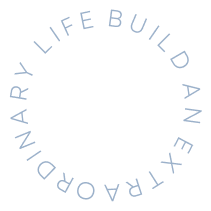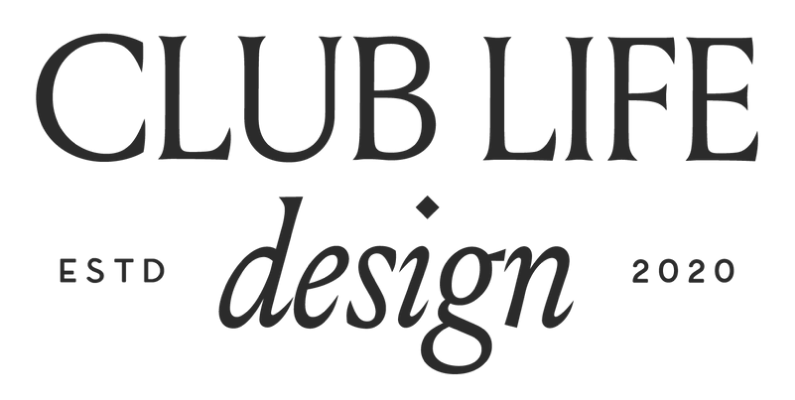We all have goals and dreams. Some might seem distant and far away, whereas others might be just out of reach and all you need is that one final step. However far your goals might be, we want to help you achieve them.
And when it comes to realizing our ambitions, mindset is key! Now you might be asking yourself, “what is the right or wrong mindset when it comes to obtaining my goals?”. To answer this question, we’ll be looking at the two different types of mindsets – a fixed mindset vs. a growth mindset – and we then we will see how you can adapt yours. Let’s jump right in!
What is a fixed mindset vs. a growth mindset?
So let’s start at the beginning – and define the two kinds of mindsets in the title of this blog.
- FIXED MINDSET: The belief that your traits, intelligence and talent are fixed and unchangeable. People who lean towards this belief may also think that if you’re not good at something, you never will be and cannot change.
- GROWTH MINDSET: People with this mindset tend to thirst for new challenges and see mistakes and failures as an opportunity to grow and learn. In contrast to those with fixed mindsets, people with a growth mindset think talents, intelligence and knowledge can always be improved upon with effort and practice.
How can I tell which mindset is which?
Now let’s spend a few moments getting to know what these different mindsets look like. As you’re reading through this section, ask yourself which of these traits apply to you. Remember that you may have beliefs from both sides. Your beliefs will most likely vary from day to day, but you will probably lean more in one direction.
So let’s first look at the main unique characteristics of a fixed mindset and how to spot them within yourself. People with this mindset hold the belief that we do not have control over our abilities and talents, our strengths and weaknesses are fixed in their mind. They believe that failure can define individuals and therefore fear to fail and fear to try new things and take risks. This is coupled with a fear of being judged which can create a vicious cycle of thinking, such as: “That seems like a good idea, but it’s a risk, and anyway… it probably won’t work out and I’ll fail at it. I don’t want to be known as a failure. And if (or when) I do fail, what would people think of me?”
It’s inner monologues such as these that people with fixed mindsets have regularly, and because of this they tend to avoid risks and give up easily when challenged. They often see constructive feedback as a personal attack, rather than take criticism constructively, they dismiss, deflect and make up excuses.
Now let’s take a look at growth mindset characteristics and beliefs in more depth. Those with a growth mindset believe talents and intellect can be developed and see the value in making mistakes. They see failure as the key ingredient to harnessing the power of growth and a crucial aspect of learning. They view the success of another person as a source of inspiration rather than intimidation.
They see feedback as a way to gain hidden insight into their own weakness and welcome a second pair of eyes to help them see what they might not have noticed. They tend to think along the lines of: “I’d much rather you tell me if I’ve made a mistake or done something wrong, because then I could put it right and maybe I won’t make that mistake again. I’d be a little smarter than I was yesterday and know something new to help me achieve my goals.” The last key difference between these two mindsets is how those with growth mindsets consistently set goals and how small steps and everyday actions can add up over time.
Pros and cons of each mindset
Let’s be honest, the growth mindset is clearly most favorable… I mean, if you had to choose between the two, that’s the one you would pick, right? It is however important to note that there are a few cons that we should be aware of when it comes to having a growth mindset. If you’re prone to growth mindset thinking, you should look out for times when you persist with ineffective learning strategies or obsessing over effort. To try to avoid this, ask yourself, “Am I working hard because I’m a hard worker, or am I a busy fool juggling ten tasks at once ineffectively?”.
Although a growth mindset has all the attention and is praised more by the world we live in, we need to remember that we all have characteristics of both mindsets and will switch between the two depending on what day it is and what environment we are in. A commonly overlooked benefit of a fixed mindset is that it is sometimes necessary to not be constantly changing yourself and the world around you. Sometimes you need to take care of the world around you and the responsibilities you have while you fit comfortably into the world and your society.
How to change your mindset
When it comes to mindset, an important question to ask is “are my beliefs holding me back in any way?”. It’s a question we often don’t ask ourselves enough but one that could change the way we act in the world if we change a poor belief system.
Do you ever say things like… “
- I have a slow metabolism, it’s hard for me to lose weight.”
- “I’m lazy and unmotivated.”
- “I’m not smart, I’ll never be good enough.”
- “I’m not good at sports”
- “I’m bad with money”
- I’ll never understand math”
By now we can probably all tell what mindset this falls into. These fixed mindset ideas will cause you to avoid trying new things. It might not be obvious to you when/if you say these things or anything that sounds like them, but you believe these ideas to avoid failing. Now the next question might be: what can I do about this?
The best way to change a mindset or a belief that is holding you back is by building a new identity for yourself one step at a time, with consistent effort.
Jacob from our CLD team shares a story from how his growth mindset changed to fixed and how he slowly broke his fixed mindset beliefs that had started holding him back.
“I was in a band signed to a record label and had started picking up some attention online. As the lead songwriter and guitarist, it fell to me to bring all the creativity to the band. I was constantly writing songs! Sometimes writing songs I didn’t like or the band didn’t like but this wasn’t a problem, because I saw these as lessons and as motivation to do better.
When the band split up, the record deal disappeared – which at the time, I thought was fine. I told myself I’ll just start a solo project, which I did but it failed because I failed to finish any of the songs. I had 16 great ideas I couldn’t finish and before I knew it, I hadn’t picked up my guitar in months and started to believe that I had lost my creativity.
All the Ideas were there, but I was too afraid to pick out my favourite song idea and ruin it, too afraid to find out that I had lost my spark and to find out that I wasn’t the guitarist I was.
I started slowly, I placed my guitar on a stand in the living room. That way I could see it (seeing is believing, I guess) and it wasn’t hidden out of sight in an old cupboard gathering dust. I then started just messing around on it for 5 minutes every day until it became a habit. I found myself spending longer on my guitar and picking it up multiple times a day without noticing and some of this messing around had began to turn into small ideas for songs.
I’ve recently found that my mindset has changed from being afraid to fail and thinking I could never match what I’d written in the past, to thinking I’m the best writer I’ve ever been and I’m now looking back at where I went wrong and learning the lessons from my previous mistakes so I can avoid making them again in future.”
Now, Jacob didn’t start by saying that he wanted to be as good or better than he was. He also didn’t set any unachievable goal with a too short time frame. The first thing he did was place his fear in front of him so he could see it everyday. He started small in a way that felt comfortable for him. He built the habit by repetition. When we build a habit, it’s like we build a small machine in our brain that works away in our head when we pick up that instrument or when we are in that environment. If we do that thing for long enough you build up the routine and then it becomes a habit.
We can also see that after Jacob felt comfortable enough to truly start writing again, he looked back to check what fixed mindset mistakes he had made in the past and what he did wrong in order to make his growth mindset more sustainable for the future. We need to always remember that a growth mindset must be a sustainable mindset and practising bad ways of doing lots of things may lead to too many failures. It might be better to fail at one thing at a time than in several different ways at once.
Grow day by day, step by step
It may sound cheesy (or even obvious) but you need to learn to walk before you can run! If you set goals that are too high, too difficult, and try to achieve them too soon, you might set yourself up to fail. How should you perceive failure? Should it define you? Or should you see it as an opportunity to learn? When you do something for the first time, you will probably do it badly like everyone does, but the more you practise, the more you show up for yourself and what you want, the better you will become and the easier it will be! By learning how to celebrate the little steps in life you will see that you are getting closer to your larger goals – one step at a time.
Look at the people around you that you aspire to be like. Their success is built on mountains of mistakes and lessons learned. So next time you make a mistake, know that you’re on the edge of what you know and what you don’t know… that this is all part of your journey. These will be the lessons you need to learn in order to grow and to be the person you want to be. Every failure is a gift and if you can take the lessons and use them to move forward… soon enough, you’ll get to where you want to be.
Hope this inspires you to keep on growing.















